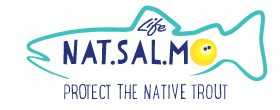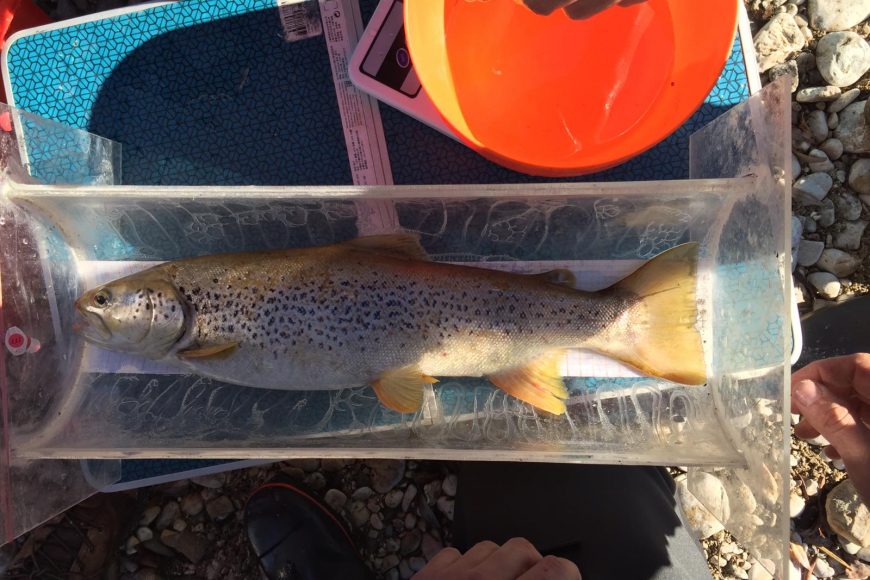As part of the preparatory action A3, the sampling stations involved 30 sites within the project area in order to cover a wide range of river habitats. The specimens, over 300 between males and females, were captured with electrofishing, measured by length and weight and marked by microchip (Pit-Tag) and with clearly visible T-anchor plates.
In each individual, a sample of adipose fin was taken to be used for genetic analysis. This preparatory action, in fact, provided for a genetic screening of the cola salmon population both to determine the degree of introgression of the native Mediterranean trout and to monitor its migratory behavior.
The results of the rapid genotyping carried out by PCR-RFLP technique have been carefully elaborated and important genetic determinations such as, e.g. the calculation of the hybridization index, the combination frequency LDH-C1 * / 16S, that of the haplotype 16S and the allelic frequency of the nuclear gene LDH-C1 *.
The results obtained show a different genetic introgression between stations and between river basins. On a scale of 6 degrees of introgression, specifically Biferno has a higher percentage of Atlantic individuals, both pure and medium; always in Biferno the percentages of heterozygous individuals are higher than in Volturno, resulting double in the case of combination III, representative of heterozygous individuals with Atlantic matrilineal line. On the other hand, Volturno compared to Biferno has a greater percentage of indigenous Mediterranean individuals (57% vs 38% – combination VI) out of the total number of individuals sampled for each river.
Furthermore, it has been observed that in the Biferno river the Mediterranean genotype has the same frequency as the heterozygous one while the Atlantic genotype (* 90 / * 90) shows a frequency of 14%; otherwise, in Volturno, the autochthonous and heterozygous genotypes (* 90 / * 100) do not have the same frequency, while the frequency of the Atlantic genotype is equal to 10%. Although the indigenous allele is still prevalent in the populations of both rivers (64% for Biferno, 77% for Volturno), the degree of introgression is high and it is presumable that, especially in the Biferno river, the heterozygotes participate to a large extent in the reproduction .
Focusing on the stations, in Biferno 4 stations out of 14 (Pianura di Bojano, Busso, Rio Santa Maria, S. Maria source) have a high percentage for the native homozygous genotype, but in 2 stations, Callora and Quirino, there are practically only Atlantic individuals. A different situation was found in Volturno, where most of the stations (12 sites out of 14) have a high percentage for the autochthonous genotype except for the sites of Loc. La Cartiera, Castel San Vincenzo (IS) and Loc. Ponte Rosso , Colli a Volturno (IS), where genotypic frequency values for the homozygous Atlantic genotype were found.



